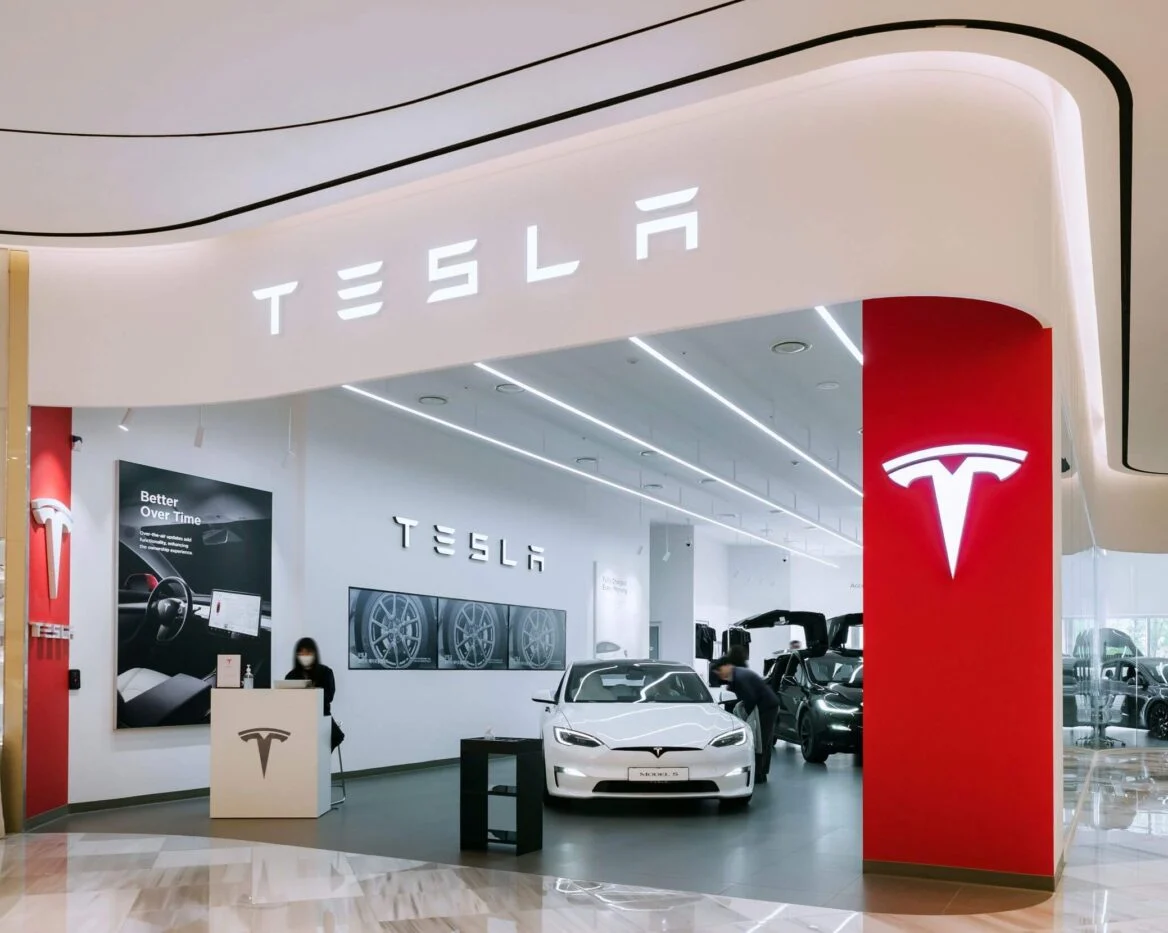TLDR
- Tesla reports Q3 2025 earnings today after market close with Wall Street expecting EPS of $0.56 on revenue of $27.3 billion
- The company delivered 497,099 vehicles in Q3, beating analyst estimates of 443,079 and showing strong performance despite market challenges
- Cantor Fitzgerald analyst Andres Sheppard maintains Buy rating with $355 price target, urging focus on robotaxi rollout, FSD adoption, and Optimus robot development
- Tesla faces headwinds from eliminated $7,500 EV tax credit, U.S. tariffs, and increased competition from Chinese automakers
- Key catalysts ahead include robotaxi expansion beyond Austin, Cybercab launch next year, FSD rollout in China and Europe, and November 6 shareholder vote on Musk’s compensation package
Tesla reports its third-quarter fiscal 2025 earnings after today’s market close. Investors are watching closely.
Wall Street expects earnings per share of 56 cents on revenue of $27.3 billion. The company needs to beat both numbers to satisfy the market.
The earnings come after Tesla delivered 497,099 vehicles in Q3. That beat analyst expectations of 443,079 units by a healthy margin.
Cantor Fitzgerald analyst Andres Sheppard rates Tesla as a Buy with a $355 price target. He says investors should focus less on traditional metrics and more on the company’s robotaxi and autonomy businesses.
Since the Q2 report on July 23, Tesla stock has jumped over 44%. The company launched Full Self-Driving version 14 and made progress on its Optimus robot and Cybercab projects.
Sheppard points out that U.S. tariffs are creating problems. The elimination of the $7,500 EV tax credit also hurts demand.
Chinese automakers are bringing more competition to the market. These factors have pressured the EV industry as a whole.
Investors want to hear CEO Elon Musk discuss timing for several key developments. The robotaxi rollout tops that list.
Robotaxi Expansion and Product Pipeline
Tesla launched its self-driving taxi service in Austin, Texas, in July. The company has expanded coverage within Austin but hasn’t added new cities yet.
The Cybercab launch is scheduled for next year. Investors want concrete dates and production plans.
FSD adoption in China and Europe represents a major growth opportunity. Regulatory approval timelines remain unclear.
Tesla recently introduced lower-priced Standard trims of the Model Y and Model 3. The move aims to offset the loss of the federal tax credit.
Orders for these more affordable versions will be a key topic on the earnings call. Pricing strategy matters more now without government incentives.
Production Targets and Profit Margins
Tesla has produced and delivered about 1.2 million vehicles globally this year. Sheppard expects a weaker fourth quarter.
He lowered delivery estimates to around 1.61 million for 2025. For 2026, he projects 1.86 million vehicles.
Revenue forecasts dropped to $94.4 billion for 2025 and $107.8 billion for 2026. These cuts reflect the challenging environment.
Automotive gross profit margins excluding regulatory credits are projected at 15.5% for Q3. That compares to 15% in Q2.
Peak margins hit 30% in the first quarter of 2022. Getting back to those levels looks difficult in the current market.
The delivery beat should translate to roughly $2.4 billion in additional sales. Wall Street estimates for automotive sales sit at $20.6 billion.
Analysts haven’t fully adjusted their models for the better delivery numbers. This could set up an earnings beat.
CEO Commitment and Shareholder Vote
Musk recently purchased roughly 2.5 million Tesla shares. The move signals his long-term commitment to the company.
Shareholders will vote on his trillion-dollar pay package at the November 6 Annual Shareholder Meeting. The vote comes after a Delaware court voided his previous compensation plan.
Analysts give Tesla a Hold consensus rating with 16 Buy, 13 Hold, and 10 Sell ratings. The average price target of $369.80 implies downside from current levels.
Tesla stock has gained 9.6% year-to-date. Over the past six months, shares have surged 95%.
Earnings estimates for 2026 have fallen roughly 33% during that same six-month period. The disconnect between stock performance and earnings revisions is stark.
Management commentary on the Optimus humanoid robot will also draw attention. Sales are expected to begin in 2026.






